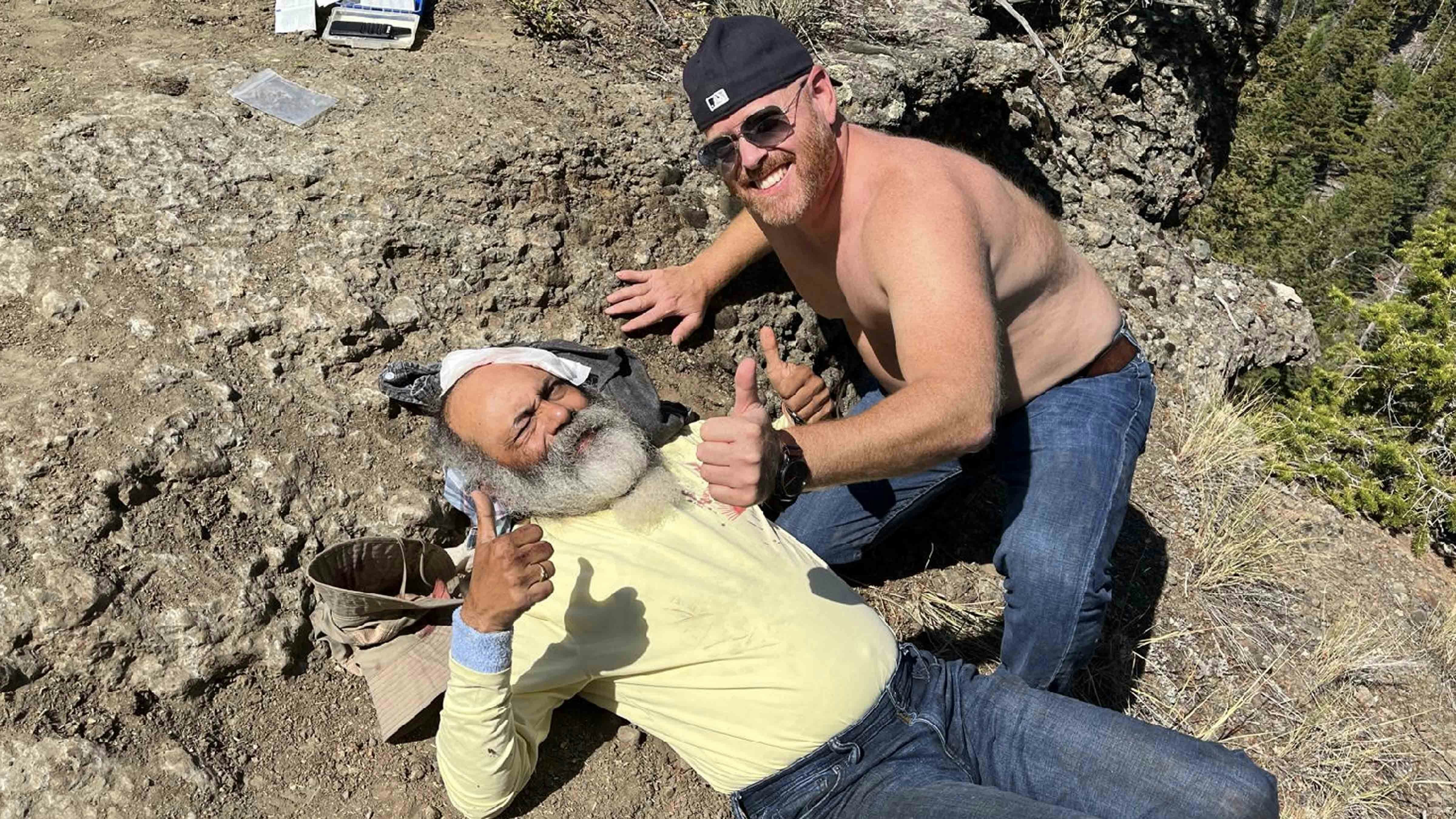Dive-bombing wolves with drones has scared wolves away from cattle in Oregon, and a wolf conservation advocate says she wants to try the same thing in Wyoming and Colorado.
“At first, if you’re just flying over, the wolf is curious. Like, ‘Is that a bird? What’s a bird doing up there?’” Kim Bean told Cowboy State Daily.
“The minute that loudspeaker goes off, it’s amazing how quickly that animal spins and goes,” added Bean, the founder and president of Wolf and Wildlife Advocates.
A Colorado resident who was born and raised in Wyoming, Bean said she was inspired by the success of drones used by U.S. Department of Agriculture agents to scare wolves away in Oregon.
Now she hopes to work with ranchers in Colorado and Wyoming, to see if drones have a similar effect on wolves here.
Effective, But Not Cheap
Getting a wolf-deterrent drone program off the ground won’t be cheap.
Drones capable of carrying the necessary equipment, such as loudspeakers and night-vision cameras, cost about $5,000 to $10,000 each said Bean, who has invested in two of them so far.
If the idea catches on, cattle and sheep ranches might be able to use them for more than just chasing off wolves. They could also possibly be used to scare away other predators, such as bears and mountain lions, she said.
And they might be handy for making regular checks on livestock, and perhaps even catching human cattle rustlers in the act, Bean added.
“You can cover a hell of a lot more landmass from the sky, looking down, than you can on foot or horseback,” Bean said.

‘The Battery Life Sucks’
Drones have their limits, she added. The probably won’t be a one-size-fits-all solution for ranchers’ conflicts with predators.
Instead, they could be used in conjunction with other tools and methods, such as livestock guardian dogs, Bean said.
And drone technology might still need some improvement, she added.
“They’re really cool, and they’re fast. The downfall is the battery life. The battery life sucks,” she said.
The typical flight time per battery charge is about 35 to 37 minutes, she said.
Mixed Results With Bears
Drones have also been used on bears, with mixed results.
In Montana – where grizzlies are repopulating open prairie habitat – wildlife managers have had some success pushing bears away from farms, ranches and other settled areas with drones.
The noise of drone propellers alone sometimes isn’t enough to get the grizzlies to scram, Dave Kemp, the Montana Fish, Wildlife and Parks Conrad-area grizzly bear management specialist previously told Cowboy State Daily.
But “human-related sounds” such as talking or even yelling at the bears over drone speakers has proven effective, he said.
“We need to associate that drone activity with human activity so the bear can make the connection: ‘This drone means people, and I don’t want to have anything to do with it,’” he said.
However, local police and Colorado Parks and Wildlife agents had no such luck with a stubborn black bear in Golden, Colorado in May 2024.
At their wit’s end after the bear refused for hours to budge from a tree it had climbed in town, wildlife agents tried hazing it by blasting Black Sabbath’s legendary heavy metal anthem “Iron Man” from airborne drone speakers.
It didn’t work.
The bear remained in the tree for a few hours more, before finally climbing down and leaving of its own accord a few hours later.

Will Wolves Just Get Used To It?
Matt Barnes, a range scientist who has worked on wolf and grizzly bear conflict mitigation on ranches in Wyoming and Montana, told Cowboy State Daily that drones are an intriguing option for non-lethal predator control.
“I think there’s certainly some applicability” for using drones to scare wolves away, he said.
In his experience, wolves – like other animals, each have their own levels of tolerance for new and potentially frightening things.
“Some wolves will react one way (to a non-lethal deterrent) and other wolves will react differently,” he said.
He cautioned against the over-use of drones, or any other deterrents.
“That’s the risk with any tool that uses lights or noise – the risk that the target animal will just get used to it,” Barnes said.
The Gittleson family, who run a Colorado cattle ranch near the Wyoming state line, previously told Cowboy State Daily that they’ve tried a variety of deterrents to try keeping wolves away from their cattle.
Some of those have included brightly-colored flags attached to fences, flashing lights and “cracker shells” – which are fired from shotguns and explode mid-air.
Wolves have gotten used to many of the deterrents, the Gittlesons said.
Barnes said that if drones aren’t over-used for hazing, they could also come in handy for monitoring livestock herds, and keeping track of predators’ locations.
Better Ranchers Than Developers
Bean hopes that drones can be one more tool that ranchers can use to mitigate their problems, while lessening the need to kill wolves to protect sheep and cattle.
“If landowners are just willing to give it a try, we’d like to give them the opportunity,” she said.
“I want to be able to help ranchers. Because if we don’t have ranchers, we have developers,” and development eats up precious wildlife habitat, she said.
Contact Mark Heinz at mark@cowboystatedaily.com
Mark Heinz can be reached at mark@cowboystatedaily.com.





